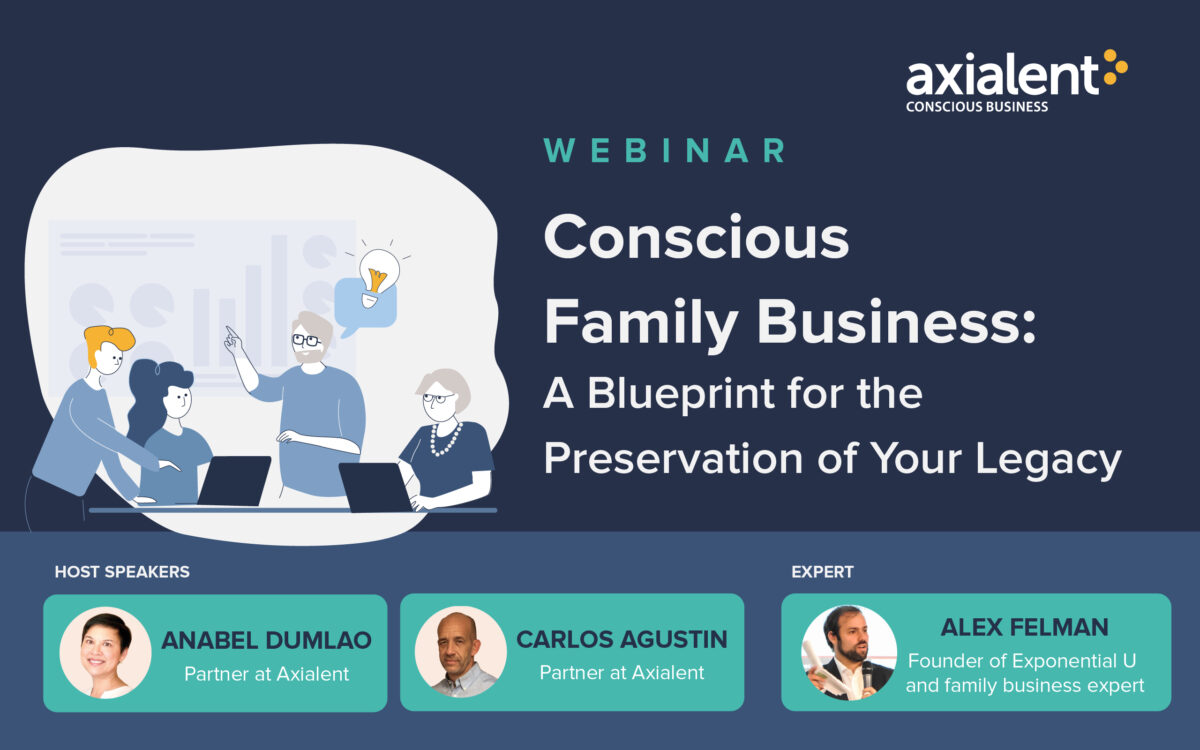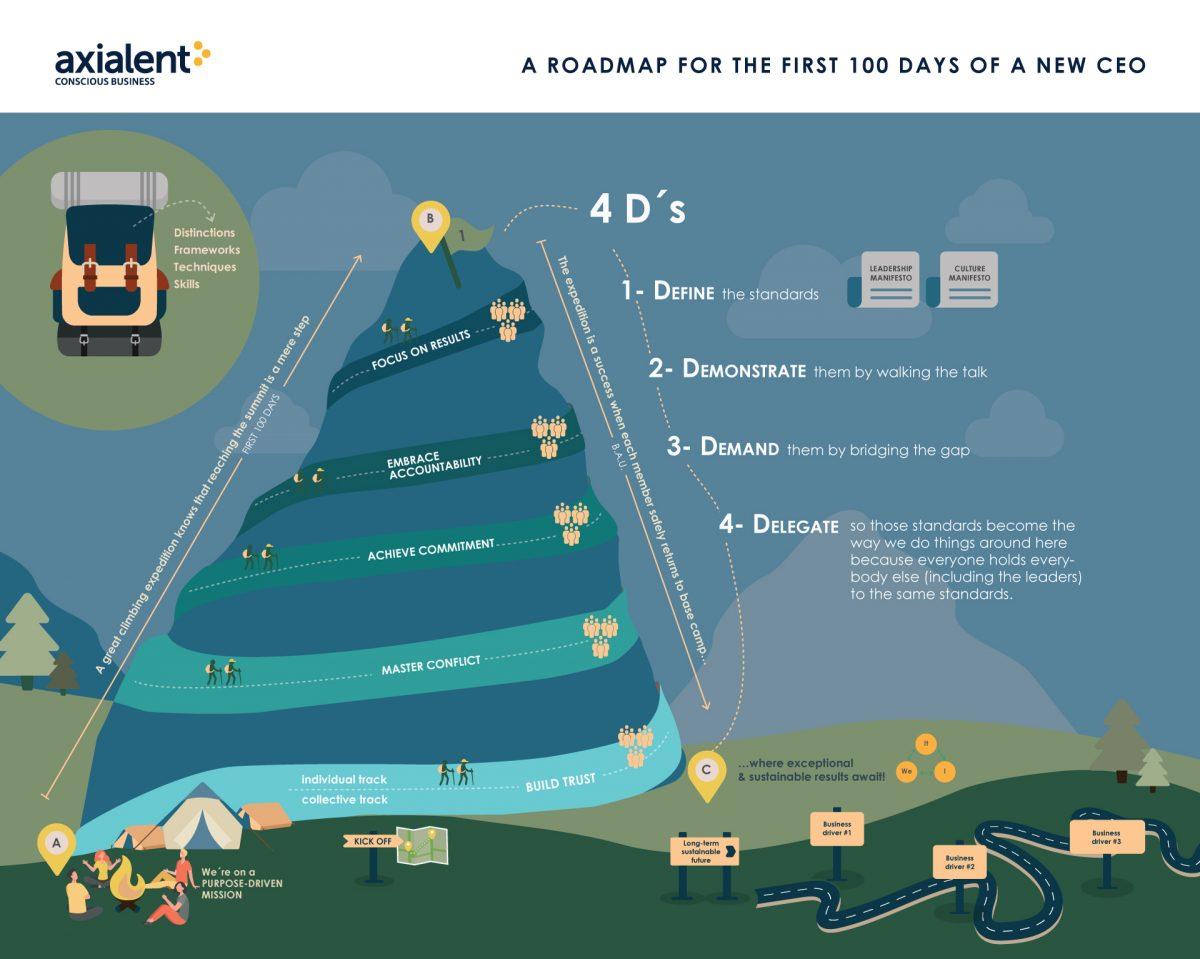Family businesses hold a unique position in the global economy, combining tradition, entrepreneurship, and emotional ties. However, preserving their legacy requires intentional strategies that address behavioral risks, values alignment, and intergenerational collaboration. With only 30% of family businesses surviving into the second generation, 12% to the third, and 3% to the fourth, according to the Conway Center for Family Business, the stakes are high.
This article explores the key principles of a conscious family business, inspired by insights shared in our recent webinar with experts Alex Felman, founder of Exponential U and Subject Matter Expert and Carlos Agustin, Partner at Axialent and Subject Matter Expert hosted by Anabel Dumlao, Partner at Axialent.
Why Family Businesses Need Consciousness
Family-owned businesses often face distinct challenges:
- Balancing personal and professional dynamics.
- Transmitting core values across generations.
- Preparing successors for leadership roles.
Carlos highlighted the importance of achieving balance across three critical dimensions: the “It” (business results), the “We” (family dynamics), and the “I” (individual well-being).
A conscious approach integrates these elements, ensuring sustainable growth and harmony.

However, a Harvard Business Review study reveals that 70% of families lack a succession plan, a critical gap that undermines their long-term viability.
Leadership transitions remain one of the primary reasons for failure, with 50-70% of all new executives failing, according to a Corporate Executive Board report.
The Role of Core Values
Values serve as the foundation for decision-making and legacy building. Alex, emphasized that transferring entrepreneurial mindsets and maintaining a growth-oriented culture are essential. However, conflicts may arise when generational perspectives diverge, especially regarding:
- Strategic priorities.
- Governance structures.
- Work-life balance.
Generational dynamics add another layer of complexity. 85% of rising generations feel ready to take control, but only 39% of those currently in power agree, according to the Camden Wealth 2022 report. This disconnect often fuels misunderstandings and stalls progress. Aligning around shared values fosters a unified vision for the business’s future.

Addressing Behavioral Risks
Behavioral risks, such as unresolved conflicts or unclear roles, can jeopardize the longevity of a family business. Using the metaphor of an iceberg, Carlos explained that most issues stem from “beneath the surface,” such as:
- Misaligned beliefs.
- Emotional grievances.
- Lack of meaningful communication.
Proactive conversations, supported by trust and emotional intelligence, help families navigate these challenges. Without addressing these underlying dynamics, 70% of change management efforts fail, according to a Harvard Business Review report, underscoring the need for conscious leadership.
Practical Steps for a Conscious Family Business
- Establish Governance Structures : Clear roles and decision-making frameworks ensure accountability and reduce power struggles.
- Prioritize Open Communication : Schedule regular family meetings to discuss business and personal goals.
- Foster Intergenerational Education: Combine technical and human skills development for younger members, including negotiation, feedback, and conflict resolution.
- Develop a Shared Narrative : Carlos recommended creating a “family story” to instill pride and commitment among members.
- Measure and Align Goals : Tools like the Family Office Navigator can assess financial and emotional capital, aligning the family’s vision with actionable steps.
Building a conscious family business is a dynamic process that requires continuous effort and collaboration. By focusing on trust, intentionality, and shared values, families can preserve their legacy and thrive across generations. As Alex Felman put it, “Consciousness begins with self-awareness—knowing where you are today and deciding where you want to go.”










 Beginnings, or new beginnings, are exciting. They create momentum, but it’s a hard job to keep the flame alive. If the leadership team does an excellent job with the four D’s mentioned in article two, there’s a higher chance that the flame will last longer. However, they will need a sustainable fuel source for that flame because eventually, it will die out. No matter how well-intended the leaders are, their behaviors are not enough to consolidate an evolving or transforming culture. Culture needs to be hinged on systems to endure.
Beginnings, or new beginnings, are exciting. They create momentum, but it’s a hard job to keep the flame alive. If the leadership team does an excellent job with the four D’s mentioned in article two, there’s a higher chance that the flame will last longer. However, they will need a sustainable fuel source for that flame because eventually, it will die out. No matter how well-intended the leaders are, their behaviors are not enough to consolidate an evolving or transforming culture. Culture needs to be hinged on systems to endure.
 Compassionate leadership does not mean being “soft with people” and not holding them accountable. It certainly does not propose giving up business results in pursuit of caring for people or make them feel connected. At the heart of compassionate leadership lies the ability to recognize the potential and need of every human being and help them develop and grow in service of the business needs.
Compassionate leadership does not mean being “soft with people” and not holding them accountable. It certainly does not propose giving up business results in pursuit of caring for people or make them feel connected. At the heart of compassionate leadership lies the ability to recognize the potential and need of every human being and help them develop and grow in service of the business needs.